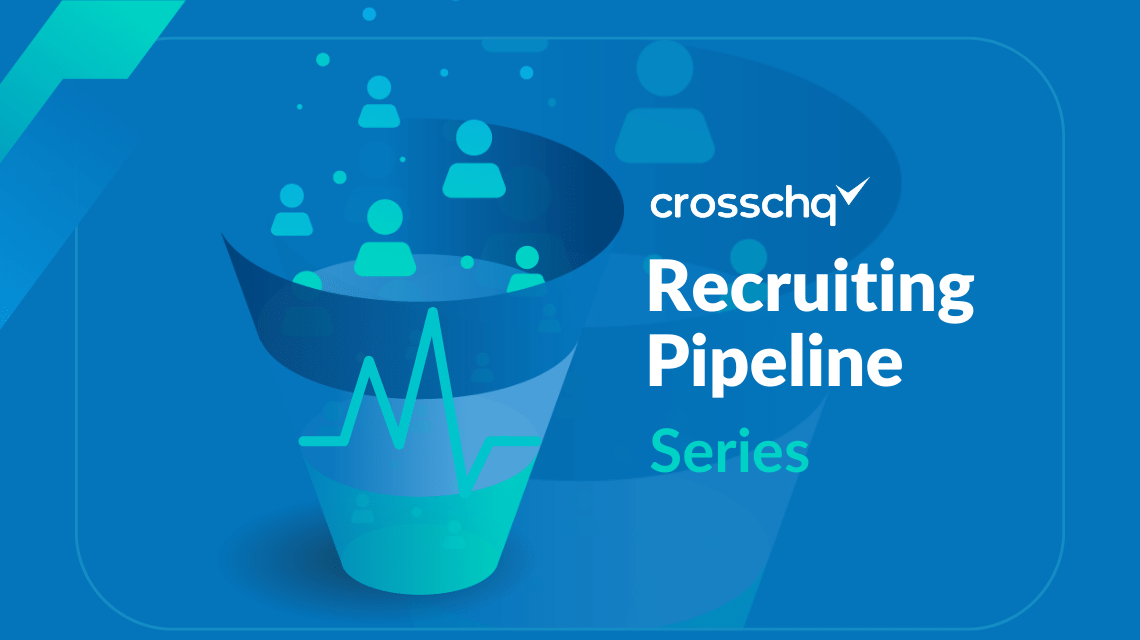

Crosschq Blog
3 Ways to Measure Talent Pipeline Health

When you create a hiring funnel or recruiting pipeline, the ultimate goal is to hire the right person for each job posting, matching candidates carefully with roles for maximum value.
Measuring talent pipeline health can be done in several different ways, depending on the metrics you are prioritizing and the weaknesses identified in your recruitment strategy and process.
Here are 3 ways you can measure the health of your talent pipeline based on prioritized need:
1. When You Need to Fill Seats Fast
Sometimes the main objective is to get a role filled as quickly as possible because having it empty is causing a variety of issues:
- Reduced productivity—deadlines or production quotas not being met
- Lowered morale—frustrated employees who are picking up the slack
- Lack of expertise—jobs undone or done poorly due to loss of a skill set
Metrics that can help reveal if your recruitment pipeline is operating effectively for fast, efficient hiring include:
Time to Hire
Also referred to as speed to hire, this metric shows how quickly you get candidates from their entrance into your hiring funnel to offer acceptance. If that time period is too long, you could be losing top talent that simply walks away rather than keep waiting.
Time in stage
How much time your candidates spend in each stage contributes to time to hire. Segmented by stage, this metric makes it easier to spot where bottlenecks are occurring in your pipeline, whether it’s at pre-hire or interview.
Fixing talent pipeline health issues related to time management
If you think you’re losing high-quality candidates due to the amount of time it takes to get them through your pipeline, there are several things you can do to help streamline processes and keep things moving.
- TalentWall™ by Crosschq gives you complete visibility into your pipeline, so you can see at a glance how long candidates are spending in each stage, and how your time-to-hire figures are stacking up.
- Crosschq 360 helps speed up the traditional reference checking process by transforming it into more of a digital candidate check, which can cut down the time needed for this step by as much as 90% and give you better insights into your candidates as well as a way to easily compare them.
2. When You Need to Hire at Volume
If you are experiencing rapid company growth and need to scale your workforce fast or require extra help due to seasonal spikes in business, you need to get a lot of candidates through your pipeline.
Metrics that can help reveal if your recruitment pipeline is operating effectively for volume hiring include:
Drop-off rate
The drop-off rate (also known inversely as the pass-through rate) shows how many candidates are making it through to the next stage of the hiring funnel. In the early stages, most candidates dropping off may be self-selecting out of the process, while in later stages candidates may be removed from consideration for a specific role. Insufficient pass-through can leave you without enough candidates in your talent pipeline.
Screen to hire
The screen-to-hire ratio tells you the total number of people who are hired out of all applicants, typically expressed as a percentage. If the screen-to-hire ratio is low, it could be due to job descriptions that aren’t attracting the right candidates, unconscious bias in hiring, or issues with time to hire.
Fixing talent pipeline health issues related to low hire volume
If you’re not seeing a high enough success rate when it comes to attracting and hiring a high volume of candidates, there are several things you can do to pump up your pipeline:
- TalentWall™ by Crosschq provides a birds-eye view of your pipeline and reveals what the drop-off or pass-through rate is for each stage. This can help you discover where candidates may be giving up on the process, so you can investigate why.
- Crosschq 360 helps eliminate bias in hiring when it comes to reference checking, giving hiring managers and recruiters an easy-to-use tool that allows candidates to be compared to each other based solely on attributes and skills.
3. When Your Focus is on Performance and Retention
If finding and hiring candidates that deliver significant long-term value to your organization is your main objective, your talent pipeline needs to be optimized to surface high-value candidates quickly and help nurture them throughout the hiring process. Better pre-hire processes can lead to superior post-hire performance and retention.
Metrics that can help reveal if your recruitment pipeline is operating effectively for hiring top talent that will perform exceptionally and stay with the organization for a year or more include:
Quality of Hire
Quality of Hire is a measure of the value an employee can bring to your organization based on a variety of factors including performance, retention, culture add, engagement, promotability, and re-hireability. Being able to identify top talent reliably and get offer acceptance from these high-value candidates can improve post-hire performance across the board.
Candidate experience
When it comes to what your candidates experience in the recruitment pipeline, meeting candidate expectations is key. A bad experience will cause employees to walk away with a bad taste in their mouths, and they’ll be likely to tell others to not bother applying. A good experience, in contrast, can mean a talented candidate who isn’t hired stays in touch and applies for another role at a later date. Additionally, organizations that provide a better quality candidate experience can benefit from greater retention.
Fixing talent pipeline health issues related to performance and retention
If post-hire performance or elevated new hire churn rates are plaguing your organization, focusing on candidate experience and Quality of Hire in recruitment can help.
- TalentWall™ by Crosschq shows where candidates are having difficulty in the recruitment pipeline, highlighting fixable issues to improve candidate experience and keep applicants moving smoothly through the hiring funnel.
- Crosschq 360 streamlines the reference-checking process, also contributing to a faster, better candidate experience with the added benefit of reducing or even eliminating unconscious bias.
- Crosschq Analytics can be used to build ideal candidate profiles based off of existing profiles of top-performing current employees. The reports available can deliver valuable insights into Quality of Hire across your organization, and you can build surveys that measure candidate experience satisfaction rates.
By measuring your talent pipeline health in various ways, you can improve your hiring funnel and make the entire process easier for candidates, recruiters, and hiring managers. Request a demonstration today to learn how Crosschq can help you evaluate talent pipeline health.
Take the Guesswork
Out of Hiring
Schedule a demo now



%20-200x43.png)








